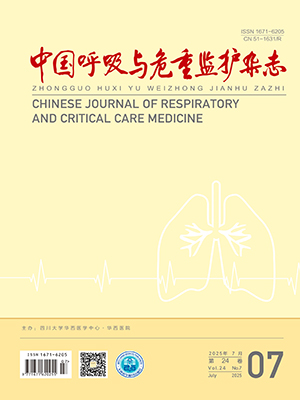Objective To summarize the clinical features, diagnosis and treatment of postinfection bronchiolitis obliterans.
Methods Clinical manifestation, chest X-ray, characteristics of lung function,computed tomography ( CT) of 6 patients with postinfection bronchiolitis obliterans from August 2009 to June
2012 were analyzed retrospectively.
Results All 6 cases were diagnosed as bronchiolitis obliterans after pneumonia. One patient had severe pneumonia complicated with congenital atrial septal defect and heart failure. 3 cases were complicated with varying degrees of cardiac insufficiency. Adenovirus in sputumsample were found in2 cases, smear positive for parainfluenza virus was found in1 case, mycoplasma were found in 2 cases, and no specific pathogen was found in the last one. All 6 cases were suffered frompersistent cough,wheezing and shortness of breath with three depression sign in 4 cases. The symptoms lasted for at least 6 weeks. Crackles and wheezing were present in all 6 cases. Small airway lesion was presented by pulmonary CT. Bronchiectasis was showed in 2 cases, atelectasis in 1 case, and consolidation in 1 case. Pulmonary function tests showed mixed ventilatory dysfunction. Bronchofiberscope examination was operated in5 cases,
only endotracheitis was found. Prednisone and azithromycin were given orally in all the cases, but the clinical symptoms were persistent in the course of treatment and no death occured. Conclusions Clinical symptoms of bronchiolitis obliterans are characterized by persistent cough and wheezing. Small airway lesions were present in pulmonary CT. Repeated lower respiratory infection is common. Prednisone is widely used in treatment of bronchiolitis obliterans, but the therapeutic effect is uncertain.
Citation: ZHU Haiyan,HAO Chuangli. Diagnosis and Treatment of Postinfection Bronchiliotis Obliterans. Chinese Journal of Respiratory and Critical Care Medicine, 2013, 12(5): 505-508. doi: DOI: 10 . 7507 /1671 -6205 . 20130121 Copy
Copyright © the editorial department of Chinese Journal of Respiratory and Critical Care Medicine of West China Medical Publisher. All rights reserved




